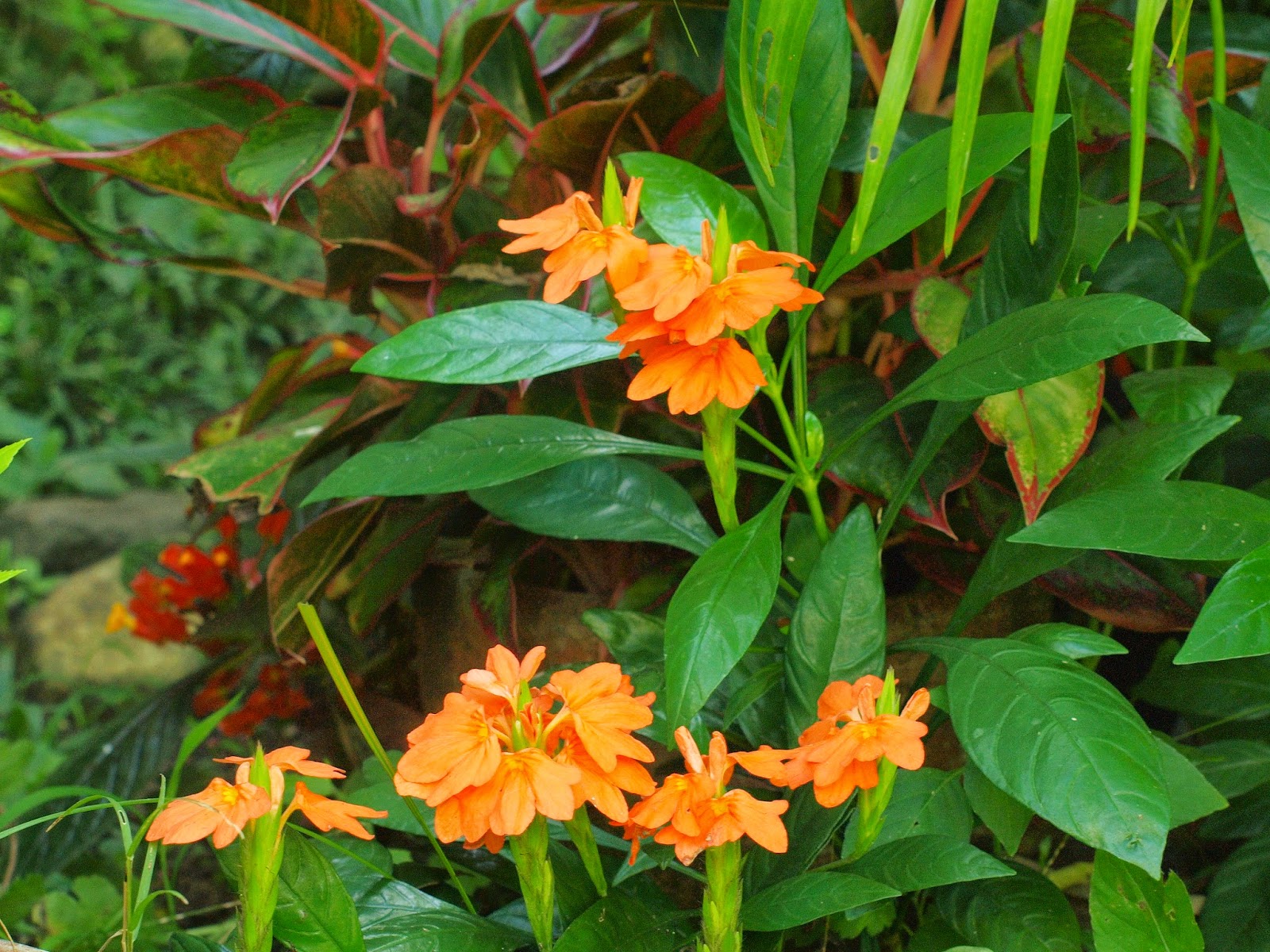I will be presenting a different style now for GBBD. As i have been posting mostly single close-up flowers, it is now the chance of the whole plants to be seen, be it like a wilderness, a soon-to-be forest, a chaotic grassy corner or an overgrown bush. I am too engrossed lately with my hoya garden chores because 2 weekends per month are not enough to do everything in my hoya garden. They include propagation, disentanglement of embracing shoots/stems, media addition/improvement, watering, pruning, and a lot more. But most of all, it is photographing and looking at them which takes most of the time.
So the plants and blooms that follow might not be the nicest looking ones in my garden, but i will still share them with you, direct from their natural location.
These
Coleus blumei photos (above and below) are of the same variety from the same cutting, but the top is shaded and the bottom receives direct sun. You might be divided in your choices, but that's alright, beauty is still in the eye of the beholder. That rule still stands!
Can you guess what flower is this? We are at the height of our rainy season, the height of prolific growths of our vines. This native gourd, Luffa sp., is conquering every plant its tendrils can cling too. It has already enveloped a small guyabano tree, a duranta hedge and already trying to reach half of the lanzones tree. Someone will say it is a bit invasive, but we allow it because it can only do that during the rainy months. After fruiting, it will immediately wilt and die. Mother loves them as vegetables, so we let them be. Mother is 84.5 years old!
This anthurium produced those dark pinks during rainy months, but they are very pale pink during the dry season. It almost died last April but recovered well. We don't repot it at all, just allow it through the years in its small pot.
The
Chrysothemis pulchellia is lovely when restricted in pots. However, they get invasive if allowed. It has persistent modified root that can hold food even when the above ground parts dried. When it rained again, it suddenly resume its vigor. Those flowers also produce a lot of seeds that grow everywhere when the rains come. I normally pull those small seedlings, consider them as weeds. But they are beautiful, do you agree?
This is an alien species, a foreigner, trying painstakingly to acclimatize in our dry environment. But in 3 years it is still alive and giving me so much delight for photography. I put it in shaded areas during the dry months, or at daytime and transfer them again outside at night for the cold and humidity. This rainy months my two gaillardia plants (Gaillardia pulchella) bask in the sun and enjoy the rains, and i bask in their beauty in return.
The seedheads don't produce seeds though. Maybe our resident insects are not familiar with it or don't like its nectar so the ovules are left unpollinated. It has been flowering for two seasons now, but i still haven't seen any insect nor butterfly alight on it.
Duranta erecta is a very favored nectar plant by bees and butterflies. Even if it is already tall, i don't prune it so i can watch the butterflies coming over. It is drought resistant too, and it is mainly the only flowering plant that sustains the insects during the dry season.
This is my mother's garden. Marigolds and impatiens mixed with each other thriving healthily. Marigolds are known to be insect repellants, i just am not sure which insects it repels. I see moths, bees and butterflies alighting on them, and their leaves are infested with leaf miners.
And this is again my mother's ampalaya plants. They are planted adjacent to my hoya garden and twines favorably to the strings holding my black nets. I just don't mind, i just remove the tendrils trying to invade my hoyas, anyway they will die after fruiting, which coincide with the end of the rainy season. Next time this will be clear. By the way, i have harvested a lot of ampalaya fruits from this plants.
Those variegated alternanthera guards the entrance to a cement stairs at the bottom of the property. I've planted hibiscus and other flowering plants there, but our goats' kids always eat them. At least they don't like eating this plant, so it grows luxuriously.
Above is a part of my hoya garden. My mother's garden is at the right side of the house, and my hoya garden is at the left. They are both nice to watch when i am having breakfast at the terrace. Mine is a makeshift location, as you can see i just put water pipes there to hang the hoya pots. I cannot get a welder yet to make a hanging house for my hoyas, but that is a formal quarter i envision to have before they get overly crowded in this place. I purposely allowed a Hoya diversifolia to grow up a lanzones tree, and now that it is already blooming, we all have stiff necks looking at the blooms. And of course, i cannot take photos of those blooms up there!
This is a portion of my hoya jungle, i need more space for them. And to satisfy your longing to see the blooms, and to substantiate posting for Garden Bloggers' Bloom Day here are some of the blooms in my hoya garden. These are just to give you a peep, and more of the real ones will be in the next post.
Hoya odorata
Hoya siariae
Hoya buotii
So those are some plant nooks in our area and some blooms we have for this October. Next month i will be posting the conventional close-up shots again. Enjoy GBBD.
































.JPG)





















